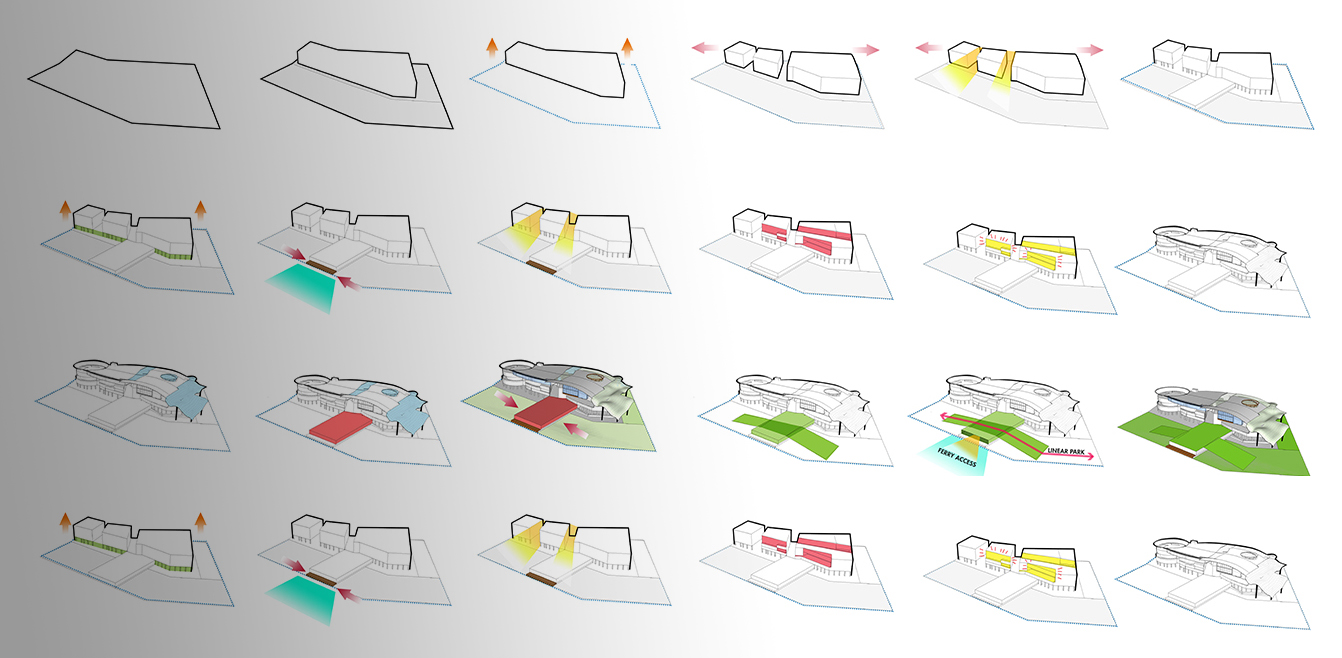Emma Walshaw is the founder of First In Architecture and Detail Library, and has written a number of books aiming to facilitate a better understanding of construction and detailing. First In Architecture is a website providing resources and guides for architects and students.
So you have made the decision to take the plunge and get started as a freelance architect; you have spent time researching your options and considering the benefits and drawbacks of freelancing. If not, visit our introductory post about going freelance:
How To Become a Freelance Architect
Perhaps you have got yourself set up as a sole trader or limited company, set up your insurance, planned the services you will provide etc. You are ready to start.
Now the hard work begins…
There are many different avenues you can take to find work as a freelance architect. Below are some ideas of where you can start, in no particular order. Perhaps all of these options will suit you or maybe just a few — every freelancer is different, with different skills, network, services and so on. You need to figure out what is right for you.
Existing Network
A great place to start is reaching out to your existing network. Think about the people you have come across over the years, this could include:
- Lecturers and tutors during your studies
- Guest lectures and speakers
- Work colleagues during placement / internship
- Clients you have met over the years (although don’t steal clients, make sure you check previous contracts to ensure you are ok to work with past clients)
- Previous work colleagues who have set up new businesses
- Previous employers / practices you have worked for
- People you studied architecture with who are still working in the industry
- Developers you may have met in the past
The list goes on! Reach out to these people either in person, on the phone or through LinkedIn. Let them know that you are available for freelance work, tell them about your services and how you might be able to help them. Start getting the word out and keep in touch with these contacts on a semi regular basis. Don’t hassle them for work, but show a genuine interest in their work and keep up to date.
New Network
Whether you have an existing network or not, you can also develop new connections. These could be through existing contacts, or by reaching out to new people. LinkedIn is a great place to start this; however, you must make sure you commit time and effort to building your profile and brand on the platform. Again, don’t hassle people but be professional, show your interest in the industry and share useful information.
It takes time to nurture new leads and indeed existing ones, but it is worth it. Keeping in contact with potential business connections, and people who may need your freelance services can be key to keeping your flow of work coming in on a regular basis.
Consider Local Connections
While an online presence is important, there is certainly a place for offline connections. If you are looking to work with people in your local area consider whether you should advertise in local directories. This will depend on your target client, whether it is other architects or people looking for architectural services for new homes, extensions and so on. Consider attending any local architectural events where you may be able to meet other architects/potential clients.
Online Freelance Platforms
Depending on the type of freelancing services you are offering, online platforms could be for you. There are now many sites that allow you to showcase your work to potential employers, bid for projects and have a safe way to work with clients you don’t know without worrying about getting paid etc.
Online platforms also give you the freedom to work for anyone in the world. On the same note, the platforms include freelancers from around the world too and can be very competitive.
Here are a few options:
Upwork
Upwork is a well known online platform where you can create a profile for free and bid for projects. Not only can you bid for projects but potential clients can also invite you for work. Therefore it’s important to make sure your profile is detailed and clear, allowing potential clients to see what you are capable of.
I have used Upwork many times, as a client, and it is my favourite platform for finding good quality, professional services ranging from online tech support, to virtual assistants, to architectural drawing and visualization services and more.
People Per Hour
This platform is similar to Upwork. You complete an online application to join the freelancer community. Once approved you can set up your profile and start bidding on projects, show off your skills and get work.
Houzz
Houzz is a little bit different to the first two options. On Houzz you can create a personal page for your business or freelancing services, adding portfolio images and projects along with your contact information. You will then be indexed on their system according to location. Houzz has a massive userbase and pretty good search rankings so it is certainly considering setting up a ‘storefront’ here!

NA House (also pictured above) by NatureArch studio/KienTrucThienNhien, Ho Chi Minh, Vietnam
Advertising and Local Work
If you are looking to work on a more local scale there are a number of options you could look at for promoting your services.
Firstly, you could advertise in local magazines/papers etc, and raise awareness of the services you offer. I would suggest that this would be more suited to a situation where you are looking to work directly with a more domestic client to design extensions and small projects.
If you are looking to provide support services to local architects, then it is a case of reaching out and making yourself known. Send out an information pack about what you do, and previous examples of your work. Let them know how easy it is to work with you and how you can jump in on a project to relieve the heavy work load pressures.
If your local area holds any architectural events or talks, make sure you get involved so you can start to be a part of the local architectural community. When looking to provide support to local architects, you will find that you will not be needed right away, but you need to be in a practices mind if they experience an increase in work and need some help. It is because of this that you need to be visible a lot, so you are the first person they think of when they need help.
Online Presence
Create an online presence. This can come in many forms so choose what works best for you. You could create your own website with a blog section where you can share your industry experience. Your website can also include your portfolio etc.
You might want to have a presence on some of the social media channels, to raise awareness of your services but also showcase some of your work. Being on a couple of platforms usually creates the best results and allows you to connect with your clients over their preferred network.
Which forms of online presence you choose will depend on your target client, and what type of projects you are hoping to work on.
How Much Should a Freelance Architect Charge?
Fees and pricing remain one of the hardest parts of freelancing. Getting it just right can be tricky. You want to be competitive, but also not undervalue your services at the same time.
Building a good relationship with your client is a good start to being able to negotiate your fee. It will also depend where the project has come from, ie, if it is an online platform like Upwork, it is extremely competitive so you might need to lower your fee just to get a look in. However, I have noticed some freelancers start off with a lower bid for their early projects, but increase their rates as they become more well known and have a few positive reviews under their belts.
Reach out to other freelancers and ask them what their fees are. Ask people you know in the industry what the going rate is for the services you are providing.
If you have bid for a project but you weren’t successful, reach out and ask why. If it is fee related you know you might need to revisit your pricing.
There is no harm in adjusting and tweaking your pricing as you go. It might take a little while to find the sweet spot.
Conclusion
Finding work as a freelance architect is not easy – it takes time and commitment to build connections and relationships. That being said, if you nurture your leads and keep on working at it, you will find you can achieve a steady flow of work as a freelancer.
Emma Walshaw is the founder of First In Architecture and Detail Library, and has written a number of books aiming to facilitate a better understanding of construction and detailing. First In Architecture is a website providing resources and guides for architects and students.
Browse the Architizer jobs board and apply for architecture and design positions at some of the world’s best firms. Click here to sign up for our Jobs Newsletter.









